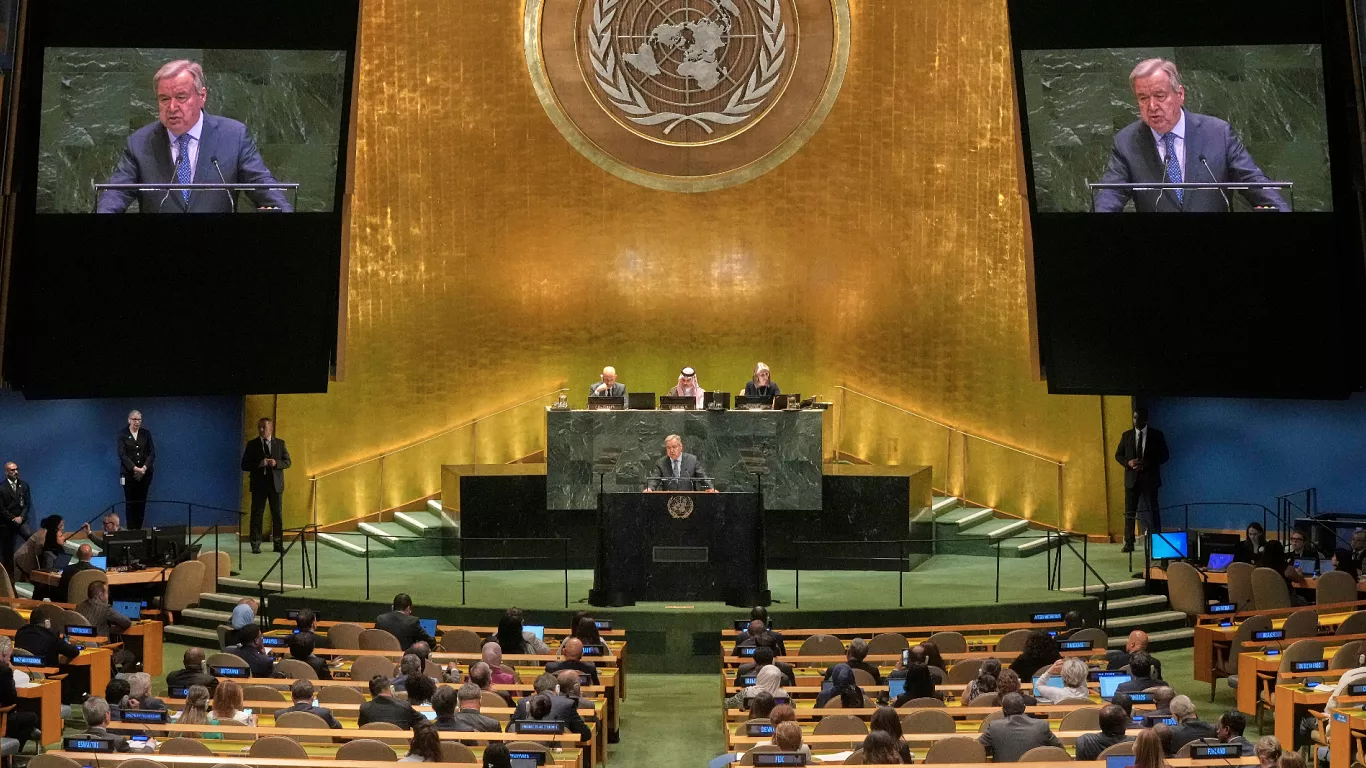In a bold diplomatic move, world leaders gathered at the United Nations Headquarters in New York on Monday to revive the two-state solution aimed at resolving the Israel-Palestine conflict. Co-led by France and Saudi Arabia, the high-level international conference brought together the European Union, Arab League, UK, Canada, and other global powers—all working to end the Gaza crisis and restore peace in the region.
Léon Marchand Shatters World Record in 200m Individual Medley at 2025 World Championships
What Happened at the New York Conference?
Initially scheduled for June but postponed, the international peace conference successfully launched eight high-level working groups tasked with advancing a roadmap for the two-state solution. The event culminated in the signing of the “New York Declaration”, a comprehensive seven-page plan proposing a phased approach to peace.
Key elements of the declaration include:
- Empowering the Palestinian Authority (PA).
- Recognizing Palestine as a sovereign state.
- Disarming Hamas and transferring Gaza governance to the PA.
- Establishing a UN-backed international stabilization mission to oversee a ceasefire and humanitarian aid.
Who Attended—and Who Didn’t
The conference saw strong participation from:
- France
- Saudi Arabia
- European Union
- Arab League
- United Kingdom
- Canada
However, both Israel and the United States boycotted the event, marking a significant diplomatic divide.
French President Emmanuel Macron announced France will officially recognize Palestine at the upcoming UN General Assembly in September, making it the first G7 nation and UN Security Council permanent member to do so. UK Prime Minister Keir Starmer signaled similar intentions if Israel fails to commit to a long-term peace deal.
Background: Why Now?
The New York Declaration comes amid rising global concern over the Gaza humanitarian crisis, with more than 60,000 Palestinian deaths reported and increasing pressure for a political solution.
The declaration:
- Condemns Hamas’ October 7 attack that killed 1,200 Israelis and led to 250 hostages, around 50 of whom are still in captivity.
- Criticizes Israel’s military aggression for causing immense civilian suffering.
- Recommends a UN-led stabilization force to help re-establish governance in Gaza and assist the Palestinian Authority.
Global Reactions
Support:
- Arab and Palestinian communities have widely welcomed the declaration, viewing it as a long-overdue step toward peace.
- Pro-peace activists and human rights organizations praised the initiative for prioritizing humanitarian and political reforms.
Criticism:
- Israeli government officials, including Prime Minister Benjamin Netanyahu, strongly rejected the two-state proposal, citing security threats and nationalist policies.
- Some Western analysts expressed skepticism about the feasibility of disarming Hamas and the PA’s ability to govern Gaza.
What’s Next?
France and Saudi Arabia have jointly called on all 193 UN member states to endorse the New York Declaration during the 80th UN General Assembly session in September.
However, with Israel and the U.S. expected to oppose the declaration, the path forward remains uncertain. Diplomatic efforts will continue, as international observers wait to see whether this renewed push will translate into real-world progress or geopolitical tension.
Conclusion
The New York conference marks a significant attempt to reignite peace talks and pave the way for a two-state solution in the Middle East. While divisions remain, especially with key players absent, the unified stance of Europe, Arab states, and other powers signals a potential shift in the global approach to the Israeli-Palestinian conflict.
Stay tuned as the UN General Assembly prepares to debate the declaration in September 2025.


1 thought on “International Conference in New York Revives Push for Two-State Solution”